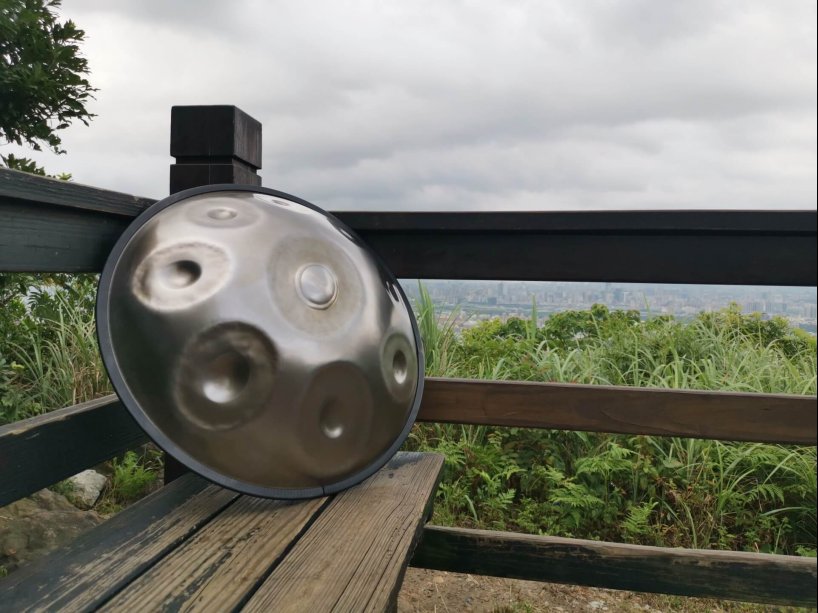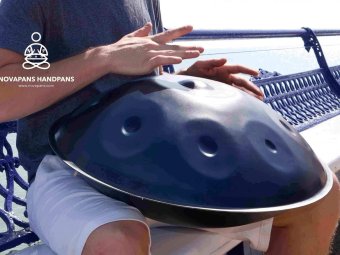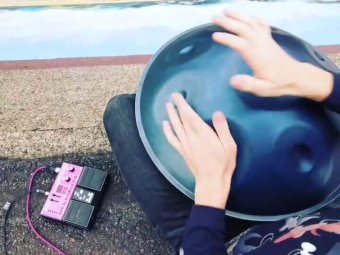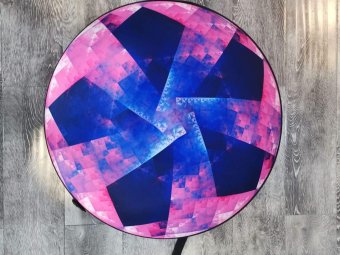The History of HandPans: Part 2

The History of Hand Pans, Part Two:
From Ellie Manette to Felix Rohner
The hand pan that sits in your lap, or that you may be considering buying, has an interesting history, and we at Nova Pans are passionate about the history of music; it's only right, then, that we pay homage to the next era of the hand pans history - the journey of the steel pan from the Carribean to Europe.
If you've read our post tracing the roots of the steel pan, you'll know that the first steel pan was made by Ellie Manette, and that he first introduced the instrument to England in 1951 at the Festival of Britain. By that time there were many steel pan bands playing in Trinidad & Tobago; this post continues the history of the hand pan, starting from those roots, taking you through the steel pan’s diaspora to its landing in Switzerland.
Humble Beginnings
Trinidad & Tobago are, relatively speaking, two tiny islands forming one tiny nation, and yet their influence on the world, and on us here at Nova Pans, has been huge. What if the steel pan never left? Well, Nova Pans wouldn't exist, for one, and you wouldn't own a hand pan (if you do - if you don't, feel free to have a look at our selection of hand pans!)
Ironically, the people/parties responsible for the widespread popularity of the steel pan - at least in the beginning - were the very people/parties who tried to suppress music from West Africans in Trinidad & Tobago - the colonial forces of the British Empire. After the British authorities banned drumming, musicians on the island started drumming on almost anything and everything they could find. This led bands of musicians to play rhythms on trash cans, and Ellie Mannette to fashion the first steel pan by experimenting with how he could dent them to produce different tones and notes.
Because of its colonial history, and because of the presence of foreign troops during WWII, Trinidad & Tobago was, in 1941, host to many different people from across Europe and America. And so the popularity of steel pan grew amongst them, but remained on the islands for the time being...
Eventually there were competitions between bands from across the island, and in 1946 an impresario named Ranee Phillips organised a nation-wide competition. First place went to a band called Sun Valley, but they were unprepared for what was to come…
Because winners Sun Valley felt they were not ready to undertake what Phillips had in mind, the honour of being the first steel pan band to play overseas went to second-place winners The Red Army. Performing under the name ‘Russian Symphony’, the band first toured theatres, community centres and schools all over Trinidad, paving the way for more performances in such spaces (in stark contrast to how hand pans are mostly played today). In what must have been a bitter-sweet experience, Russian Symphony was led by Ranee Phillips on a tour of British Guyana - a nation to which the players might well have been able to trace their ancestors, who were abducted and taken to Trinidad as slaves.
And yet, the largest markets for steel pan still appear to have been Switzerland, by way of England, largely thanks to one man…
The Steel Pan to the Hang, via England and Switzerland
While Winston “Spree” Simon (who you'll remember if you caught our piece on the history of the steel pan as perhaps the first steel pan player) travelled Ghana and Nigeria in the 1950s, and there were other steel pan groups who toured multiple countries throughout Africa, our story is tied intimately with Sterling Betancourt in the UK.
Sterling Betancourt was a member of TASPO (Trinidad All Steel Percussion Orchestra), which travelled to the UK in 1951 with Ellie Mannette to perform in the Festival of Britain. Luckily for us, and for all enthusiasts of the hand pan and its precursors, Sterling stayed in the UK after TASPO travelled back to Trinidad. As well as spreading the influence and popularity of steel pan throughout Europe, we have him to thank for the pivotal role he played in establishing Notting Hill Carnival in London (and its counterparts across the globe)
Sterling Betancourt encouraged the emergence of steel pan bands in London and throughout the UK, and even set up the first steel pan band in Switzerland, where this story will reach its conclusion in the birth of the “hang”. As well as Betancourt, there were a handful of steel pan bands who travelled to Switzerland to play in high-end and luxurious hotels. One of these players was Steve Berg, who is likely the first person to build and tune a steel pan in Switzerland; after visiting Trinidad for the Carnival in 1962, he made Freiburg his home in 1964, while steel pan was still largely unknown in continental Europe.
In 1972, after a steel pan gig at the Comptoir Suisse (a large commercial event in Lausanne, Switzerland), Steve Berg was inspired to start building his own instruments, guided by the book “Steel drums, how to play them and make them”, by Kim Loy Wong. Still, the steel pan went largely unknown, until...
The influence of Sterling Betancourt (who is, at the time of writing, alive and well at 90 years old!) was spreading. He was playing steel pan concerts mostly in Zurich, and initiating there (as he'd done in London) the celebration of Carnival culture. By the mid-70s, larger steel pan orchestras were forming, and in 1976 they had made their way over to Bern for the city’s festival - Bern-Fest (no prizes for guessing how they came up with that name!)
It was at Bern-Fest in 1976 that Felix Rohner first came enchanted by the ‘pan-jumbie’ (or the ‘spirit of the pan’) upon witnessing a performance by a Trinidadian steel pan orchestra.
Rohner was instrumental in the continuing growth of steel pan culture in Switzerland, but eventually left the scene to start the company PANArt, under which he experimented with other instruments and created the early hand pan. That's where things got murky, and eventually Nova Pans came in to sort it all out!
If you’re interested in the next part of our story, and how Nova Pans came to be, you can read The History of Hand Pans: From Felix Rohner to Nova Pans.
And, of course, if you’re interested in purchasing a hand pan, we welcome you to check out our selection!
Discover our handpans
-
Performance Handpans (Generation 3) in Purple
$1,599.00 – $1,699.00 Select options This product has multiple variants. The options may be chosen on the product page All Handpans -
Starter Handpans (Generation 4) in Gold
$799.00 – $999.00 Select options This product has multiple variants. The options may be chosen on the product page All Handpans -
Sound Healing Handpans (Generation 7) in Gold
$1,299.00 – $1,999.00 Select options This product has multiple variants. The options may be chosen on the product page All Handpans
More post about handpans







